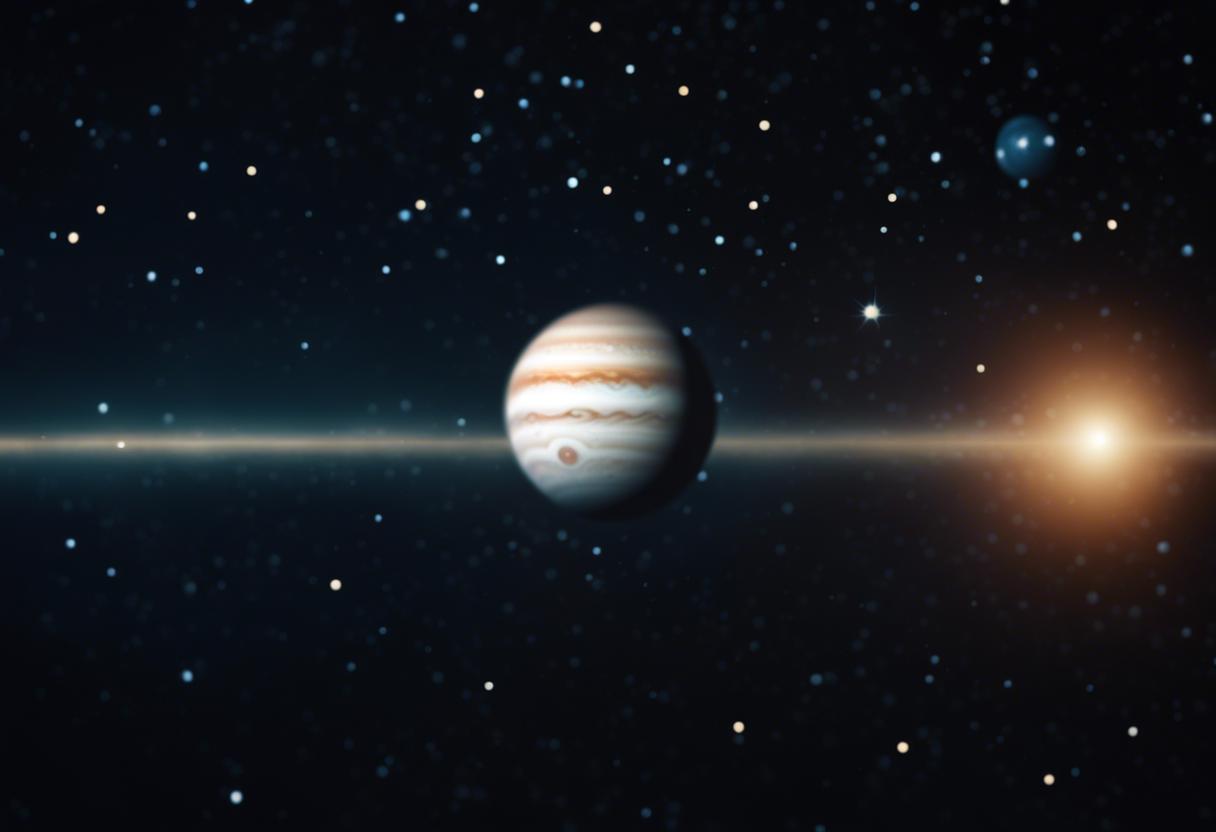In an ambitious venture in the realm of interplanetary exploration, European space academics are getting ready to control their Jupiter Icy Moons Explorer (Juice) in a bid to perform an earth and moon fly-by, marking the first dual gravity-assist approach in space.
Physicists from Dublin’s Institute for Advanced Studies will participate remotely in this high stakes operation, conducting tests on Monday and Tuesday to confirm the correct trajectory of the spacecraft.
This operation underpins the success of the mission by the European Space Agency (ESA). It aims to guide the €1.6 billion mechanised probe towards Jupiter, the target, by 2031. Upon arrival, Juice will begin its observation of Jupiter’s two moons, Europa and Ganymede, intending to detect signs of life potentially hidden in their frozen oceans.
ESA emphasises that this manoeuvre calls for extremely precise navigation as the slightest deviation can result in the failure of the mission. The Juice spacecraft operations manager, Ignacio Tanco, compares it to navigating a minute corridor at high speed.
This complex interplanetary dance demands that Juice move at an exact velocity, timing, and direction for each interaction. Despite the difficulty, such manoeuvring is an absolute prerequisite for engineers to discover the Sun’s more distant planets, stressed ESA. It might even be feasible to spot Juice in the sky as it speeds past the earth.
According to Prof Caitríona Jackman of DIAS Planetary Magnetospheres Group, a direct flight to Jupiter would necessitate 60,000kg of fuel for Juice, a prohibitive load. She collaborates on the mission with her colleagues Dr Mika Holmberg and Dr Hans Huybrighs.
Collecting data during a spacecraft’s journey to the outskirts of the solar system can be likened to receiving intermittent energy shots of espresso, due to the necessary fuel spurts needed to decelerate and enter planetary orbits. This scenic path, utilising the gravitational pull of inner planets for momentum, is the sole method to reach the distant solar system.
This lunar-Earth fly-by is of significant value as one of the limited chances during Juice’s 8-year expedition to Jupiter to make distinct calibrations and record essential measurements, stated Professor Jackman. The Earth-Moon fly-by gives the DIAS team a chance to examine and predict Juice’s responses within a lunar environment, preparing for subsequent fly-bys of Jupiter’s moons.
“The fly-by needs meticulous monitoring due to its critical nature. A minuscule error could veer Juice off its trajectory, leading to a mission failure,” Professor Jackman warned. “This lunar-Earth fly-by marks the initial phase of Juice’s excursion through the solar system bound for Jupiter. The Moon and Earth’s gravitational forces will guide and direct Juice on its trajectory for a subsequent Venus fly-by expected in August 2025,” she added.
Dr Huybrighs, tasked with the particle environment package instrument, stressed the importance of precise and extensive measurements in studying the potential of Jupiter’s moons to sustain life. He explained that the moons slowly discharge surface particles, which occasionally might erupt as 100-kilometre-tall water plumes. Detecting these particles assists in understanding more about the moon’s ability to potentially support life. The exploration of how Juice could optimally detect such plumes is among the topics currently being researched at DIAS, he said.
Furthermore, the study team led by co-investigator Dr Holmberg aims to understand how the spacecraft itself may influence measurements of particles. This research feeds into the broader study of the planetary radio and plasma wave investigations.
The lunar-Earth flyby measurements could potentially revolutionise our exploration findings. This interaction between the spacecraft and its surroundings could influence how we interpret certain metrics, which could in turn alter our comprehension of the origin or the quantity of lunar particles we are seeking to identify. The environmental influence on the spacecraft and its impact on moon particles is modelled through computer simulations, permitting us to rectify any potential distortions that may affect the mission later, stated a spokesperson.
The Jupiter Icy Moons Explorer (Juice) mission’s moon flyby provides the ideal initial opportunity to apply our correction methods amidst an active moon encounter, which is quite thrilling. This allows us to fine-tune our tools and rectify any residual issues, opening up unforeseeable avenues for discovery.
The mission brings together 18 distinct research institutes, 23 different countries and 83 separate corporations, with a team of over 2000 members. The Dublin Institute for Advanced Studies (DIAS) involvement is financially backed by Science Foundation Ireland and receives support from the European Space Agency (ESA). Other references from The Guardian.

